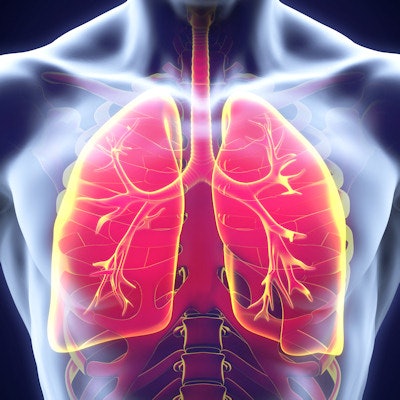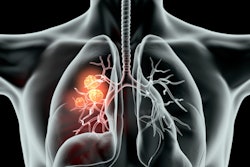
Nonsmokers benefit from regular CT lung cancer screening as much as heavy smokers, especially if they have a family history of the disease, according to study findings presented January 30 by a team of Taiwanese researchers at the International Association for the Study of Lung Cancer's (IASLC) World Conference on Lung Cancer in Singapore.
The results demonstrate that in countries like Taiwan, where many patients who have never smoked develop lung cancer -- in fact, 53% of those who die of the disease there do not smoke, the IASLC said in a statement -- screening with low-dose CT (LDCT) can be effective, said presenter Dr. Pan-Chyr Yang, PhD, of the National Taiwan University College of Medicine in Taipei in the statement.
"The study revealed that LDCT screening for lung cancer in never-smokers at high risk may be feasible, which is very important ... [considering] the increasing global threat for lung cancer," he said.
At the meeting, Yang shared data from the Taiwan Lung Cancer Screening for Never Smoker Trial (TALENT), conducted in part to develop a risk-prediction model that would identify those who could benefit from CT lung cancer screening. The study included 12,011 participants enrolled between February 2015 and July 2019.
Participants were between 55 and 75 and had never smoked, although they had at least one risk factor for lung cancer, such as family history of the disease, passive smoking exposure, tuberculosis or chronic pulmonary disease, or absence of ventilation during cooking.
Of the total study cohort, the investigators found the following:
- 50% had a family history of lung cancer.
- 17.4% showed findings indicative of disease on screening.
- 3.3% underwent lung biopsies or surgeries.
- 2.6% were diagnosed with lung cancer.
- 96.5% of the patients were diagnosed with early stage disease (0 or 1).
Yang's team also found that the prevalence of lung cancer was 3.2% among participants with a family history of the disease and 2% in those with no family history. Lung cancer risk increased as the number of first-degree relatives with the disease increased, from 3.1% among those with one relative with lung cancer to 9.1% among those with four relatives with it.
The TALENT results for early cancer detection were even better than those of the National Lung Screening Trial (NLST) and the Nederlands-Leuvens Longkanker Screenings Onderzoek (NELSON) trial, Yang and colleagues noted.
"The TALENT study confirmed the effectiveness of LDCT screening in a predefined, never smoker, high risk population," they wrote. "The T0 lung cancer detection rate was 2.6%, which was even higher than the NLST study (1.1%) and NELSON study (0.9%)."
Yang and colleagues plan to develop a lung cancer risk score predictor that takes family history and genetic and environmental factors into account that will help establish a standard screening protocol for Taiwan.
"We hope the screening program can benefit patients suffering from lung cancer, especially in those countries with high incidence of lung cancer in never [smokers]," Yang said in the IASLC statement.



















